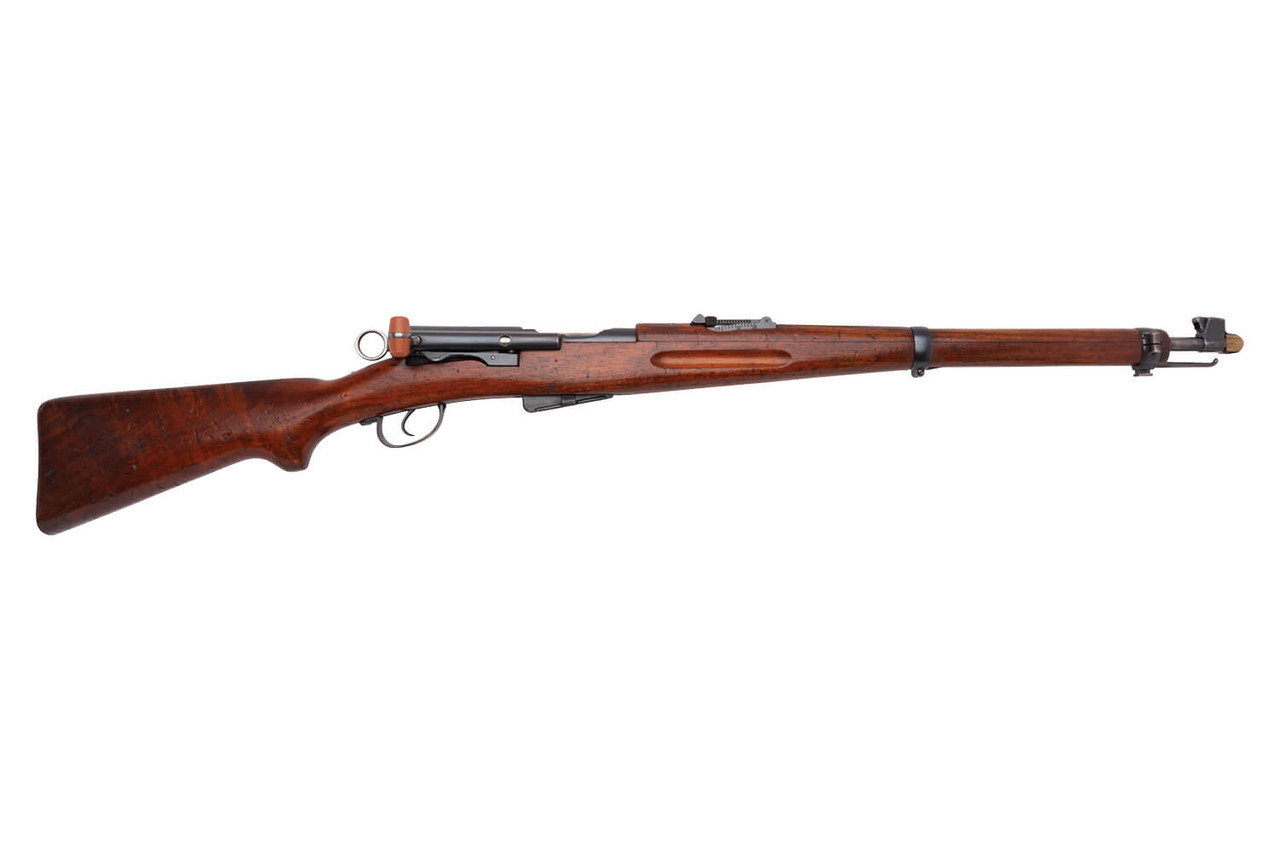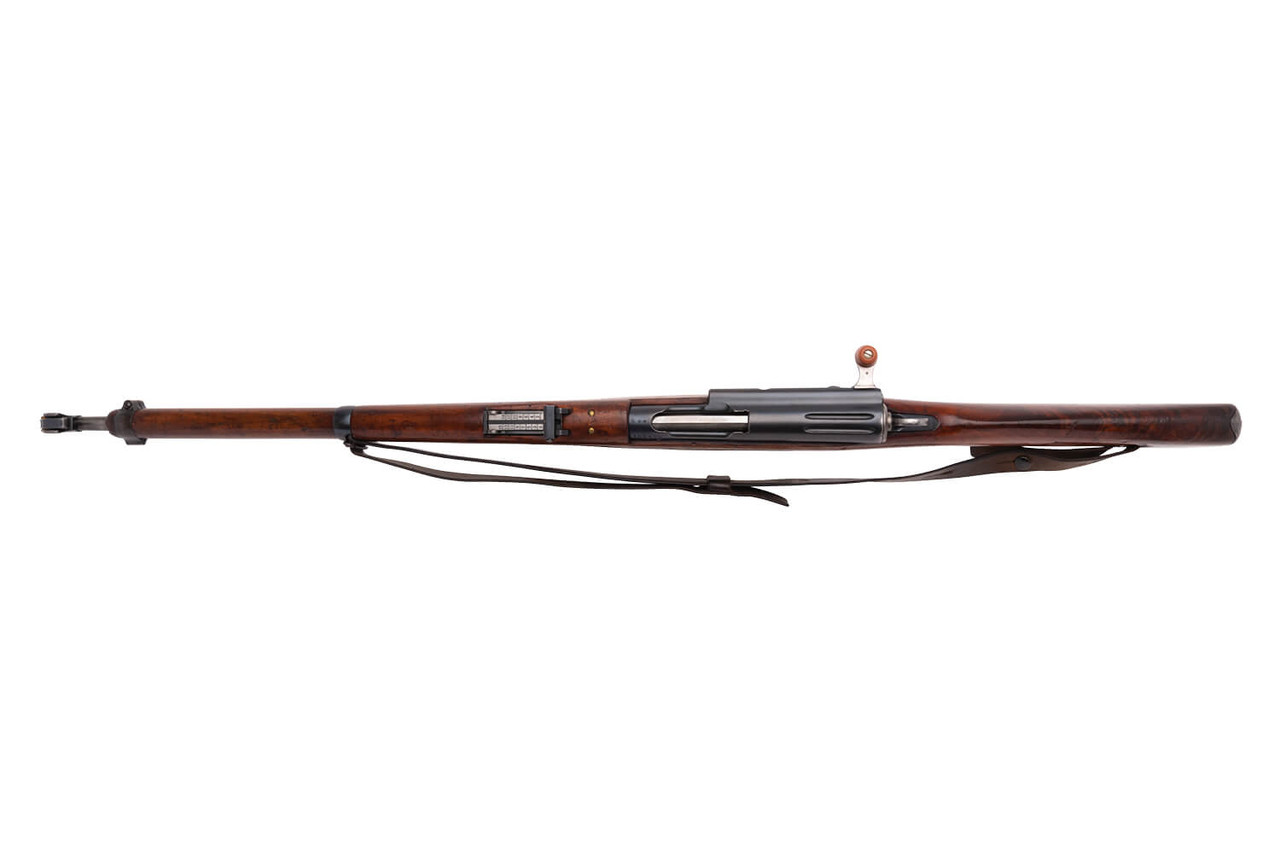Product Description
Swiss K11 Carbine, produced in 1922, in very good condition with 85% original finish. 5/5 Bore. 4/5 Stock. Stock and handguard matching serial numbers. Bolt matching serial number. Magazine matching serial number.
Furniture has many pressure marks throughout. While having a beautiful tiger stripe pattern, the butt of the stock has many mild to heavy pressure marks on all sides. There are multiple gouges on the underside of the stock from the toe to the pistol grip. On the left side of the stock there is a heavy pressure mark rear of the finger groove, above the magazine. There is another moderate pressure mark at the top of the grip, below the woodline. There is some light gouging on the comb and many light pressure marks. The handguard has many light pressure marks, a couple of small gouges to the right of the rear sight, and a couple of light gouges on the top side in between the two barrel bands.
Receiver has very dark bluing overall. There is light edge wear around the loading slot, mild finish wear at the rear, light edge wear on the right side, and a few marks in the metal. Rear barrel band has good bluing with light wear and light patina. Front barrel band has light finish wear with light patina, finish wear on the left side at the hinge, mild finish wear on the right side at the mounting screw and on the underside at the bayonet lug. Light edge wear on the front sight. Trigger plate has good bluing with wear around the mounting screws. Trigger guard has fair edge wear and surface marks on the metal. Magazine has mild edge wear.
Bolt knobs are in like-new condition and are non-original.
Receiver is P 34 stamped, indicating privatization in 1934.
Includes muzzle cover and leather sling.
C&R Eligible. Discreet import engraving.
The Karabiner Model 1911 (K11) is the shorter, lighter, carbine model of the Swiss 1911 rifle. It is a magazine fed, straight pull, bolt action rifle chambered in 7.5x55mm Swiss Gewehrpatrone 1911 (GP11). Though the 1911 rifle ceased production in 1919, the K11 was produced through 1933 as the Swiss military realized the benefit of outfitting their service members with shorter, lighter, carbines.








